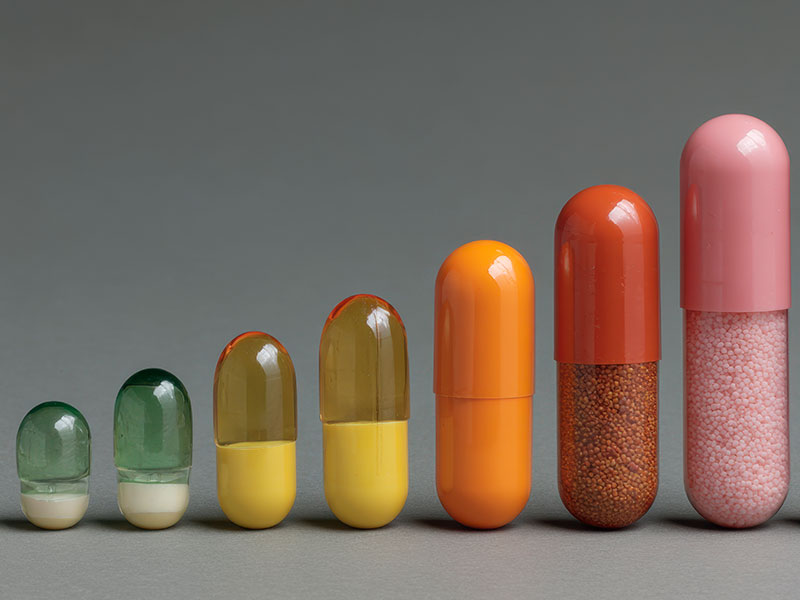Your pharmacy just called to let you know they’re switching your Lantus prescription to something called Rezvoglar. The pharmacist mentioned it’s a biosimilar and will work the same way, but you’re left wondering what that actually means for your diabetes management.
Change can feel unsettling when it involves medication you depend on daily. For the millions of Americans managing diabetes with insulin glargine, understanding what biosimilars offer can help ease concerns about medication switches while potentially providing cost benefits.
The transition from brand-name medications to biosimilars involves specific considerations that differ from typical generic drug switches.Knowing what to expect can help you work more effectively with your doctor during any potential medication change.
What Makes Rezvoglar Different from Generic Medications
Biosimilars occupy a unique category in pharmaceutical development that falls between brand-name drugs and traditional generics. While generic medications are identical copies of small-molecule drugs, biosimilars are highly similar versions of complex biological products like insulin.
Rezvoglar contains insulin glargine-aglr, which is produced through biotechnology processes similar to those used for Lantus.
The manufacturing involves living cells rather than chemical synthesis, creating insulin molecules that are nearly identical to those in the reference product. This biological manufacturing process requires more sophisticated quality control measures and specialized storage conditions compared to traditional chemical medications.
The FDA approval process for biosimilars requires extensive testing to demonstrate that the new product works in the same way as the original medication. Unlike generic drugs, which can be automatically substituted by pharmacies in most states, biosimilar changes often require communication between your doctor and pharmacy. The regulatory pathway for biosimilars also requires ongoing monitoring of manufacturing processes and post-market surveillance to ensure continued similarity to the reference product.
Some states have enacted automatic substitution laws for biosimilars, while others require your physician to specifically prescribe the biosimilar version. The complexity of biological manufacturing means that while Rezvoglar is highly comparable to Lantus, it’s not considered identical.
The FDA has determined that any differences between the products are not clinically meaningful, but the distinction explains why the approval process involves more rigorous testing than standard generic approvals.
Effectiveness and Safety Considerations
Most people who make the change from Lantus to Rezvoglar don’t require dose adjustments. There could be slight differences in injection experience, such as variations in how the insulin feels when injected or minor differences in injection site reactions.
These differences are generally temporary and resolve as patients become accustomed to the new formulation. The timing and duration of insulin action remain essentially the same between Lantus and Rezvoglar.
Both provide approximately 24 hours of insulin coverage with relatively flat action profiles, making them suitable for once-daily dosing in most patients.

Practical Aspects of Making the Switch
The process of changing from Lantus to Rezvoglar often begins with a conversation between you and your physician. While some pharmacy changes happen automatically based on insurance coverage decisions, the most successful transitions involve advance planning and communication.
Your doctor will review your current diabetes management, including your daily insulin dose, injection timing, and recent blood sugar control.
Most patients can transition directly from their current Lantus dose to the same dose of Rezvoglar without any adjustment period. The injection technique, storage requirements, and administration schedule remain the same as what you’re already familiar with.
Insurance coverage often drives the timing of biosimilar changes. Many insurance plans now prefer biosimilar options due to their lower cost, which can result in lower copayments for patients. However, coverage policies vary significantly between different insurance providers.
If your insurance plan is moving coverage from Lantus to Rezvoglar, you’ll often receive advance notice from either your insurance company or pharmacy. This notification period allows time to discuss the change with your medical team and address any concerns.
Some patients choose to move to biosimilars even when their insurance covers both options, primarily due to cost savings. The decision should involve discussions with your healthcare team about your individual circumstances and treatment goals.
Cost and Accessibility Benefits
One of the primary advantages of biosimilar insulins like Rezvoglar is their potential for reducing medication costs. While pricing varies depending on insurance coverage and pharmacy, biosimilars are typically priced lower than their reference products.
The cost difference can be particularly significant for patients without insurance coverage or those with high-deductible health plans.
Patient assistance programs are often available for biosimilar insulins, potentially providing additional cost relief for eligible individuals. These programs may offer different benefits compared to assistance programs for brand-name insulins, sometimes with different eligibility requirements or application processes.
Insurance formularies often favor biosimilar options, which can result in lower copayments or coinsurance amounts for patients. However, formulary placement varies between insurance plans, and some may require prior authorization or step therapy protocols before approving biosimilar coverage.
Manufacturing competition from biosimilars can also influence the overall insulin market, potentially leading to broader cost improvements across different insulin options. As more biosimilar insulins become available, increased competition may drive further price reductions.
Availability can vary by pharmacy and geographic location. While major pharmacy chains typically stock popular biosimilars like Rezvoglar, smaller or specialty pharmacies may need to order the medication specifically. Discussing availability with your pharmacy before the transition can help avoid delays in accessing your new insulin.

Working with Your Healthcare Team
Open communication with your physician forms the foundation of any successful medication transition. Before changing to Rezvoglar, discuss your current diabetes management routine, including injection timing, meal schedules, and any challenges you face with your current insulin regimen.
Your doctor can help establish a monitoring plan for the transition period. This might include more frequent blood sugar checks, keeping detailed logs of glucose readings, or scheduling follow-up appointments to assess how well the new insulin is working.
Questions to discuss include how to handle dose adjustments if needed, what signs to watch for that might indicate problems with the new insulin, and when to contact your medical team with concerns. Your doctor may recommend making the change during a period when your schedule is relatively stable, avoiding times of high stress, travel, or major routine changes.
Your pharmacist can also serve as a valuable resource during the transition. They can provide information about the specific Rezvoglar product, storage requirements, and what to expect when you pick up your first prescription of the biosimilar insulin.
Getting Help with Insulin Costs
Managing diabetes requires consistent access to insulin, regardless of which specific product you use. The RX Advocates helps make insulin treatments more affordable through patient assistance programs for both brand-name and biosimilar insulin medications.
We understand that medication switches sometimes occur due to cost concerns, and we work to ensure that financial barriers don’t interfere with effective diabetes management.
Contact The RX Advocates at 844-559-8332 to learn about assistance options for your insulin medications and ensure that diabetes treatment remains accessible.

